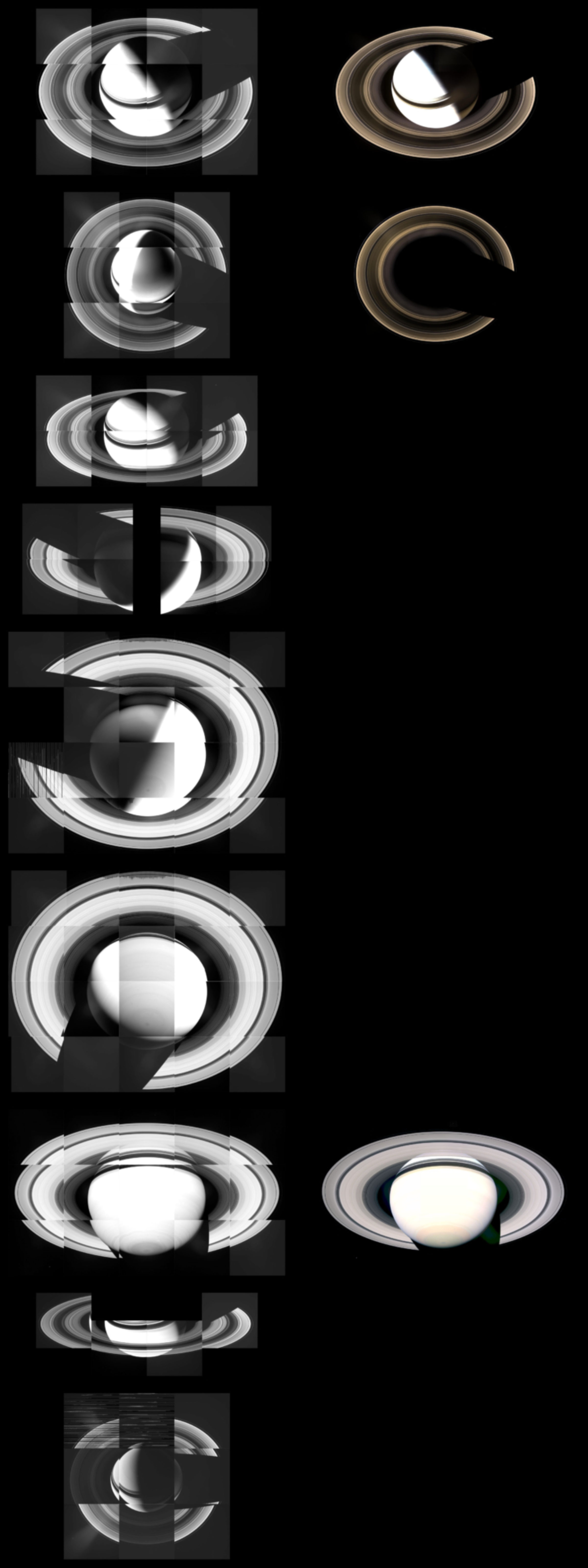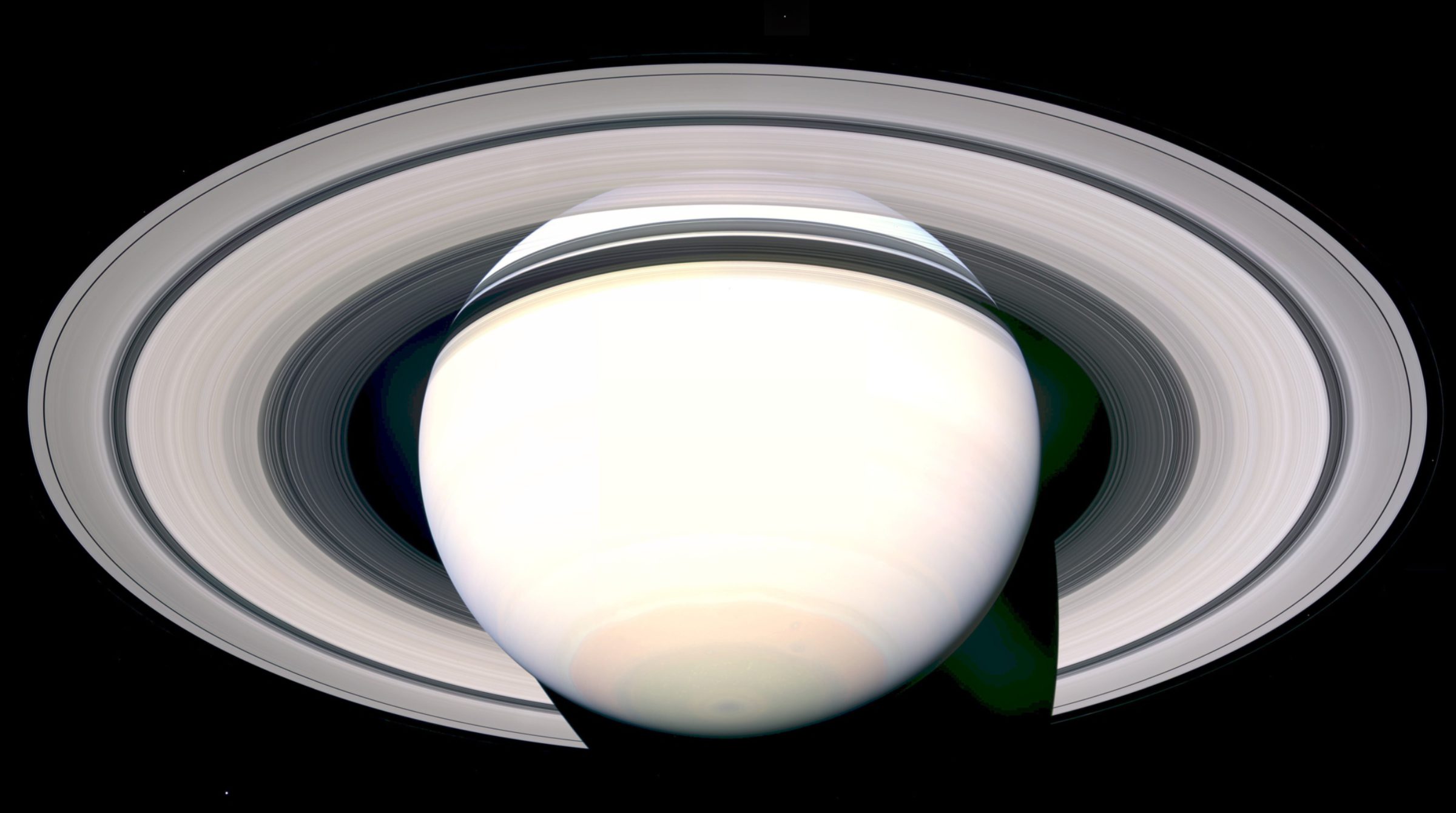Emily Lakdawalla • Mar 08, 2007
Cassini's global views of Saturn and its rings
Since late January Cassini has been acquiring several sets of images that show all of Saturn's globe and ring system at once from perspectives well above and below the ring plane. I enthused about this earlier and posted an amateur version of one of the mosaics and then the imaging team's version of two of the mosaics. For a while I've been meaning to go through the raw images and see just how many of these there are. Well, I finally did it, and the answer is seven complete multispectral mosaics have been captured since January 19, plus several partial ones. Here's a preview of what they will all eventually look like. I just tossed the frames into very quick and dirty mosaics without any attempt to align features or correct brightness and contrast; just this effort took long enough!

I love how the globe and rings change in size, shape, color, and phase as Cassini's orbit takes it closer to and then farther from the planet. (Cassini reached apoapsis on January 24, when rev 38 began; periapsis on February 1; apoapsis on February 10, beginning rev 39; periapsis on February 19; and apoapsis on February 27, beginning rev 40.) Speaking of all these revs, I want to point you all to a new and extremely useful feature on the Cassini imaging team's website: a section called "Looking Ahead" that goes orbit by orbit, giving previews of the imaging team's plans for the spacecraft. (You can also always check my tour page for the most basic data about events on each rev.)
I fervently hope that the imaging team will manage to get all of these assembled and released, because each one is a stunner. It's certainly not scientifically necessary to do the painstaking work to assemble these into seamless mosaics. But boy, are these images beautiful. To whet your appetite further, here is Ian Regan's version of the February 20 mosaic, which was taken from a very low phase angle so that we see very few shadows. Because of the nature of the raw images it was tough for Ian to get the subtleties of Saturn's colors -- we'll have to await the official version for the full glory of the color. But this is beautifully seamless and features no fewer than six of the ringmoons. Ian very nearly went insane trying to put this together, poor guy! It took him ten days, he says, and "At times it was an extremely frustrating process indeed; however, as each tile fitted together and more of the finished composite was revealed, I grew ever more excited." I can affirm that once you've started trying to get these assembled, you just can't stop until all those little ringlets are aligned. That's why I didn't even begin to try to correct the ones in my montage above -- I knew that if I started, I wouldn't be able to stop.

Anyone else want to try your hand at putting together a Saturn globe?
Let’s Go Beyond The Horizon
Every success in space exploration is the result of the community of space enthusiasts, like you, who believe it is important. You can help usher in the next great era of space exploration with your gift today.
Donate Today

 Explore Worlds
Explore Worlds Find Life
Find Life Defend Earth
Defend Earth

